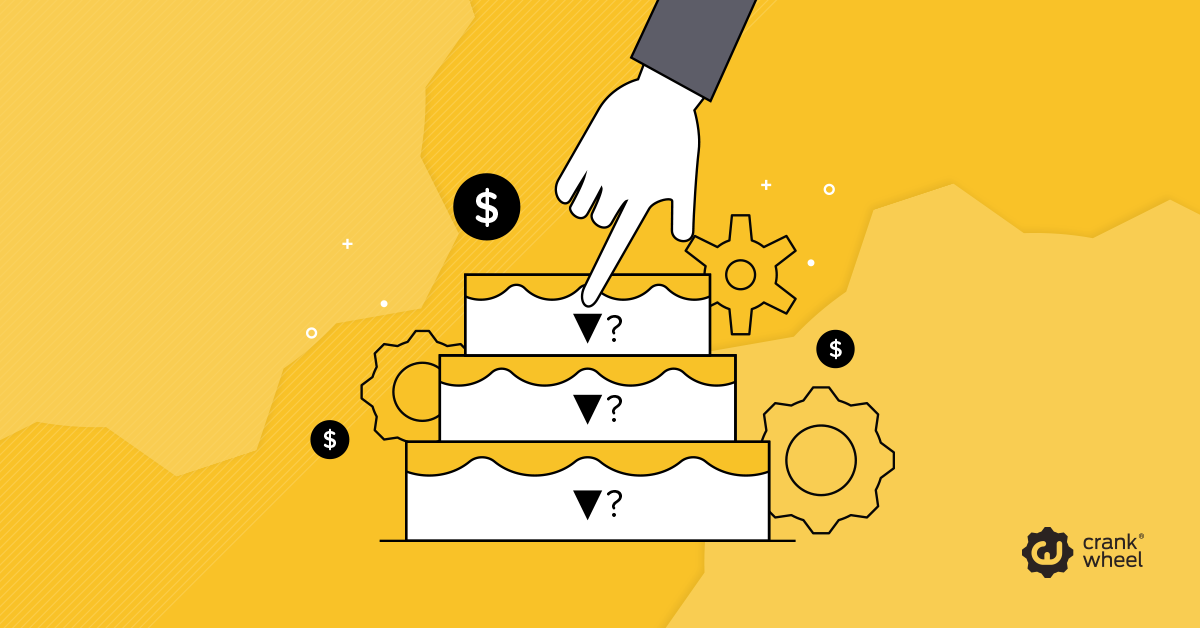Tap into and use the 3 layers of sales questions
Closing a deal is surely the most important aspect of every prospect interaction, right?

Actually no, that’s the end of the process. And the beginning of working with them as a client.
But long before it gets to that point, you need to qualify them as potential prospects. You need to know whether they’re a viable lead. At the same time, they need to assess whether you can potentially provide the service they need and solve the problem(s) that need solutions.
To do that, you need to ask the right questions. Inspired by David Hoffeld’s book, The Science of Selling, there are three layers of questions salespeople can ask to more accurately and successfully qualify sales leads. Let’s take a closer look at those three layers, and how you can use them to get better information from sales prospects.
#1: First Layer of Questions
First-layer questions establish a foundation and are especially useful in an initial qualifying conversation or demo. Questions such as “who”, “what”, “why”, “where” and “when” are especially useful at this stage in the process. Here are a few examples of first layer questions you can use to get the ball rolling:
- How’s business (e.g. how is the company doing, what market share do you have)?
- What are you looking to achieve with this project, or getting in a new product or service?
- Who gets to decide what happens (e.g. who’s the decision-maker)?
- Do you have a budget for this, or who can allocate a budget?
- Are you already using something similar (e.g. working with a competitor)?
- What’s motivating you to attempt to solve this problem?
#2: Second Layer of Questions
Now you’ve asked the first layer of questions, you need more detailed information. First-layer questions give you a potential wealth of qualifying and background details that make it easier for you to go more in-depth with the second layer of questions.
This is also a chance for potential customers to explain what they’ve already said in more detail. With the answers to these questions, it should be a lot easier to craft a sales pitch. In some cases, this might be more than enough information. Or you might need to ask the third layer of questions.
What you need to remember is what you are trying to accomplish with every question: Determine whether a prospect is viable. At the same time, you need to assess whether they’ve got a budget, who controls it, how to convince them, and whether the company is serious about potentially working with you. If you can find that out, then every question is worth it.
Here are some examples of second layer questions:
- Why did you go with Vendor X for that project/in the past?
- What services or features are you likely to need? What sort of timescale are you thinking about for implementing this?
- What sort of ROI are you looking for?
- Would training or support be useful once you are ready to go ahead?
As you can see, these questions are getting a little more in-depth. But there is more detail you can get from prospects, and should get. Especially if the average sales cycle takes a while and the deal sizes are decent (e.g. Enterprise-level and multi-year deals that take time).
Naturally, sales leads want to know as much as possible. But sales teams need an equal amount of information, otherwise, it’s more difficult to put together sales proposals, pitch documents, and tailor everything according to what a prospect needs.
So for those sales that take a little more work, we have a third layer of questions to consider using.
#3: Third Layer of Questions
Two of the most important considerations for buyers are the hope for gain and equally the fear of loss.
Gain, in a business sense, could be increased revenue or profit. So companies invest in sales and marketing.
Fear of loss could mean finding ways to mitigate or reduce potential losses. Insurance works in that way. So do service and maintenance contracts, or security software and cameras. Those are examples of products and services that work to reduce the fear of losing what a company already has.
At this level, it’s useful to determine the key strategic motivating factors for potential clients. With these questions, you can also get closer to getting them to the decision stage in the buying cycle. How they answer often proves a helpful indicator as to whether a prospect is serious. Here are a few examples of third layer questions you can ask:
- If we solved problem X for you, what impact would that have on profits?
- If you didn’t do Y in 3 months [e.g. buy/implement your product or service], how will that impact costs and operations for you?
- This is clearly very important for you; may I ask what this will mean if it’s resolved and you get the ROI you want?
You don’t need to ask all layers in one conversation. It could happen over several, or a combination of calls, demos and email exchanges. However, once you’ve got all of the most relevant information this will make it significantly easier to tailor a proposal around what a prospect needs. That should make it easier to convert a higher percentage of sales prospects.
Key Takeaways: How to use 3 layers of questions:
- First layer: Basic “who”, “what”, “why”, “where” and “when” to establish rapport, get some information and start to qualify a lead.
- Second layer: Qualify a lead more effectively, get more information, and dig deeper.
- Third layer: Get a lot more detail and use the answers to help move a prospect towards the decision end of the sales process.
CrankWheel: Cut your sales cycle in half with instant screen-sharing. Go from two or more sales calls to one: Become a one call close sales team.
